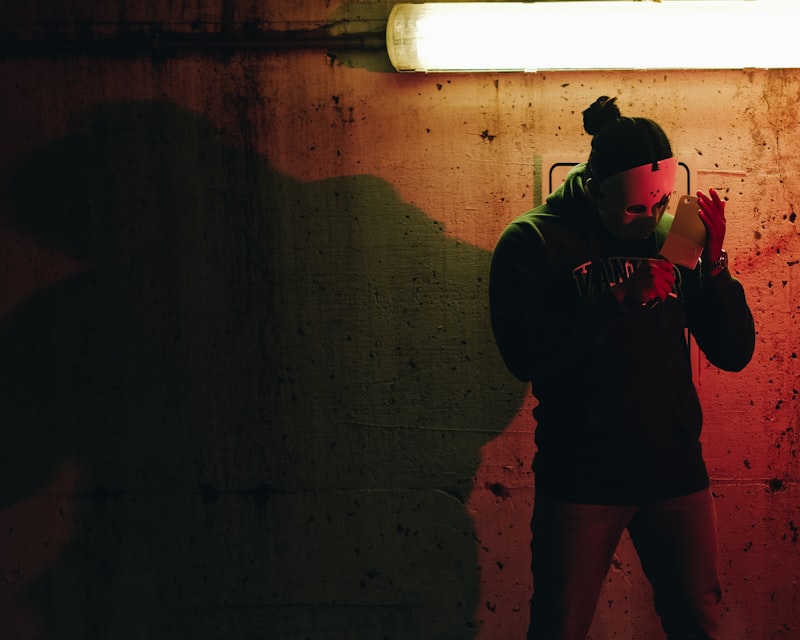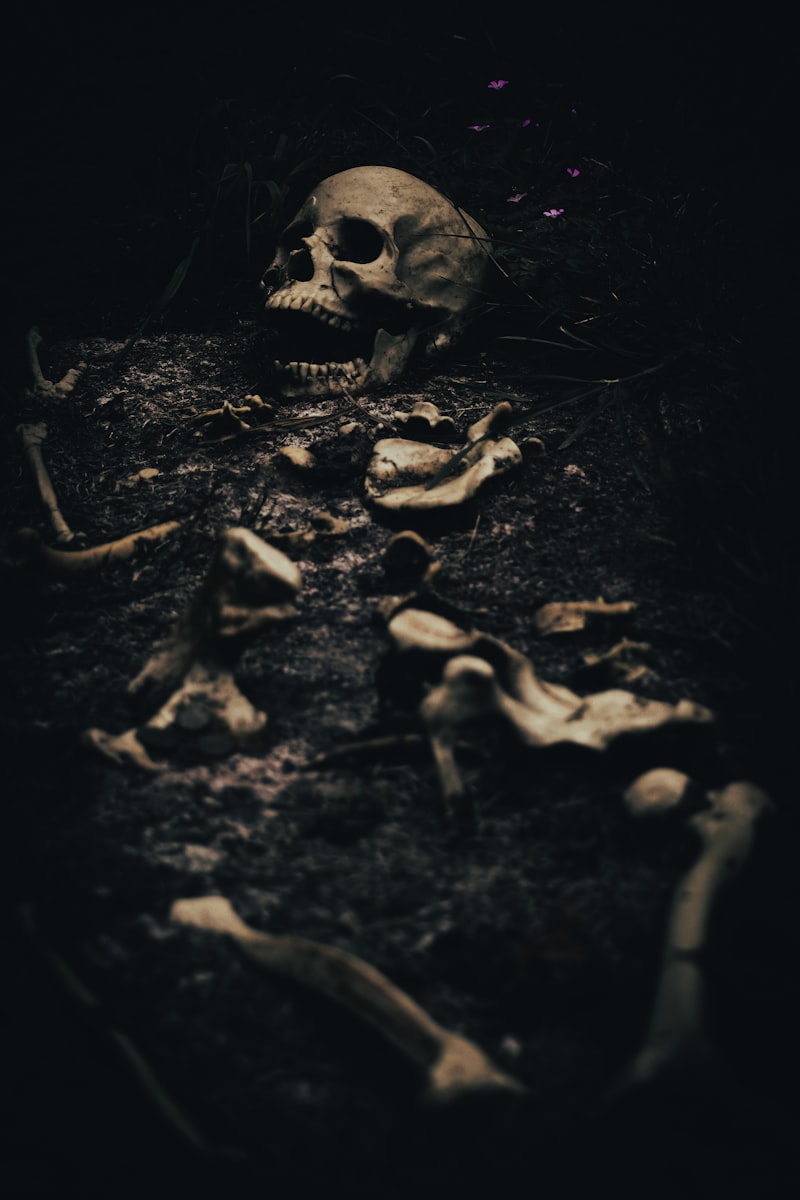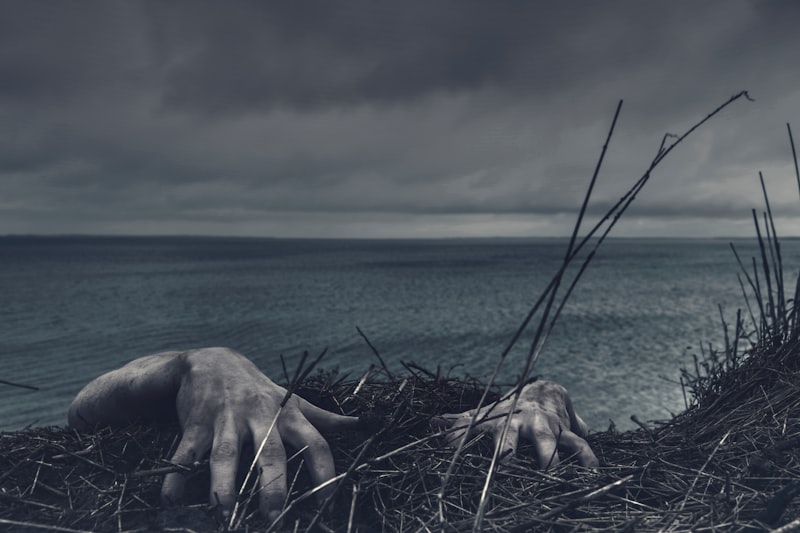In the early 1900s, silent horror films like “Nosferatu” (1922) relied on atmospheric tension and eerie visuals to instill fear. These pioneering works set the stage for what would become a beloved genre, exploring themes of the supernatural and the unknown.
As cinema progressed into the mid-20th century, horror found its voice with iconic films such as Alfred Hitchcock’s “Psycho” (1960). This era introduced psychological horror, delving into the depths of the human psyche and tapping into primal fears.
The 1970s and 1980s ushered in the golden age of slasher films, with franchises like “Halloween” and “Friday the 13th” becoming household names. These movies emphasized graphic violence and suspenseful chase sequences, defining horror for a generation hungry for adrenaline-pumping scares.
By the 1990s and 2000s, horror diversified with the rise of supernatural thrillers like “The Sixth Sense” (1999) and found-footage horror in “The Blair Witch Project” (1999). These films blurred the lines between reality and fiction, inviting audiences to question what they believed to be true.
In the present day, horror continues to evolve with groundbreaking films such as Jordan Peele’s “Get Out” (2017) and Ari Aster’s “Hereditary” (2018). These movies combine social commentary with chilling narratives, pushing the boundaries of what horror can achieve in both storytelling and cultural relevance.
The evolution of horror films through the decades mirrors society’s evolving fears and fascinations. From the shadowy figures of silent cinema to the psychological depths of modern thrillers, each era has contributed to a genre that thrives on the unexpected and the unsettling. As technology advances and storytelling techniques evolve, one thing remains constant: our enduring fascination with the macabre and the unknown.
From Nosferatu to Pennywise: A Century of Terror in Horror Films
Horror movies have been chilling our spines for over a century, bringing to life our darkest fears and most haunting nightmares. From the eerie silence of Nosferatu creeping through shadows to the malevolent grin of Pennywise the Dancing Clown, these films have woven themselves into the fabric of our collective fears.

Imagine stepping into a dimly lit theater in the early 1920s, not knowing that you’re about to witness the birth of horror cinema. Nosferatu, with its silent, eerie atmosphere and the haunting presence of Count Orlok, introduced audiences to the macabre allure of vampires. It set the stage for decades of spine-tingling narratives that would explore the depths of human terror.

As the decades rolled on, horror evolved. The 1930s brought Universal Pictures’ iconic monsters like Dracula, Frankenstein, and the Wolf Man, each representing different facets of our fears — the unknown, science gone awry, and our primal instincts. These films captivated audiences with their Gothic settings and tragic anti-heroes.
By the 1960s and 70s, horror took a more psychological turn with classics like Psycho and The Exorcist. These films delved into the horrors of the mind and the supernatural, leaving viewers questioning their own sanity and beliefs. Directors like Alfred Hitchcock and William Friedkin mastered the art of suspense and terror, using every shadow and sound to elicit fear.
The 1980s ushered in a new era of horror icons and slasher films. Freddy Krueger’s razor-sharp claws in A Nightmare on Elm Street and Jason Voorhees’ relentless pursuit in Friday the 13th became synonymous with fear. These films pushed the boundaries of gore and terror, becoming cult classics that still terrify audiences today.
In more recent years, horror has diversified into subgenres like found footage (The Blair Witch Project), psychological horror (Hereditary), and supernatural thrillers (The Conjuring). Each subgenre offers a unique lens through which to explore fear, whether it’s through shaky camera angles that blur reality or haunting tales inspired by folklore.
Today, horror continues to evolve with new technologies and storytelling techniques. Films like It, based on Stephen King’s novel, have reintroduced classic villains like Pennywise to a new generation, blending nostalgia with modern horror elements.
From the silent shadows of Nosferatu to the digital horrors of today, horror films have carved out a niche in cinema that taps into our deepest fears and fascinations. Whether you’re a fan of blood-curdling screams or spine-chilling suspense, there’s a horror film out there waiting to haunt your dreams.
How Silent Screams Became Jump Scares: Horror Movies Over 100 Years
In the early 1900s, silent horror films such as “The Cabinet of Dr. Caligari” and “Nosferatu” relied heavily on visual storytelling and expressive acting to evoke fear. These films, despite their lack of spoken dialogue, mastered the art of suspense through haunting imagery and eerie soundtracks. Audiences were gripped by the sinister shadows and grotesque figures that populated the screen, sparking a fascination with the macabre that endures to this day.

As cinema entered the sound era, horror movies gained a new dimension with the ability to amplify fear through chilling screams, eerie whispers, and unsettling sound effects. The iconic scream in Alfred Hitchcock’s “Psycho” became synonymous with terror, triggering a visceral reaction from viewers worldwide. Soundscapes enriched the horror experience, immersing audiences in a cacophony of dread that heightened the impact of every scare.
In the latter half of the 20th century, horror evolved into various subgenres—from supernatural horrors like “The Exorcist” to slasher films such as “Halloween” and psychological thrillers like “The Shining”. Each subgenre brought its own brand of fear, pushing boundaries and reinventing what it meant to be terrified on screen.
With the advent of CGI and advanced special effects, horror filmmakers embraced new tools to craft increasingly realistic and visceral scares. Movies like “The Ring” and “Paranormal Activity” exploited modern anxieties and technologies to create a sense of dread that lingered long after the credits rolled.
Today, horror continues to evolve, blending traditional fears with contemporary issues and storytelling techniques. Films like “Get Out” and “Hereditary” explore social and psychological terrors, resonating deeply with audiences while pushing the genre into bold new territories.
From silent shadows to jump scares, horror movies have captivated audiences for over a century, transforming nightmares into unforgettable cinematic experiences. As technology and storytelling evolve, one thing remains constant: the thrill of being scared out of our wits, proving that the darkest corners of our imagination still hold endless fascination.
Gothic to Gore: The Shifting Faces of Horror Cinema Across Time
From the eerie shadows of Gothic castles to the visceral gore of modern slashers, horror cinema has evolved dramatically over the decades. This genre, rooted in humanity’s deepest fears and darkest imaginations, reflects our changing societal anxieties and cultural shifts.
Horror cinema traces its origins back to the early 20th century with silent films like “Nosferatu” (1922) and “The Cabinet of Dr. Caligari” (1920). These movies embodied the Gothic tradition, characterized by eerie atmospheres, supernatural elements, and monstrous villains. They tapped into primal fears of the unknown, death, and the macabre.
In the 1930s and 1940s, Universal Pictures pioneered horror with iconic monsters like Dracula, Frankenstein’s monster, and the Wolf Man. These films, such as “Dracula” (1931) and “Frankenstein” (1931), defined the genre with their tragic yet terrifying creatures, setting the stage for horror’s popularity in mainstream cinema.
The 1960s saw a shift towards psychological horror, exemplified by Alfred Hitchcock’s masterpiece “Psycho” (1960). This era delved into the complexities of human psyche, blurring the lines between the monstrous and the mundane. Films like “Rosemary’s Baby” (1968) explored paranoia and supernatural dread, resonating with a generation grappling with social upheaval.
By the 1970s and 1980s, horror evolved yet again with the rise of slasher films. “Halloween” (1978) and “Friday the 13th” (1980) introduced masked killers stalking unsuspecting teens, embracing graphic violence and suspense. These films reflected growing anxieties about youth culture and morality, cementing the slasher subgenre’s place in cinematic history.
Today, horror cinema continues to reinvent itself. From psychological thrillers like “Get Out” (2017) to supernatural sagas such as “The Conjuring” series, contemporary horror explores diverse themes and storytelling techniques. It blends traditional scares with innovative narratives, keeping audiences on the edge of their seats while reflecting current societal fears.
Horror cinema is a dynamic genre that evolves with each generation, from its Gothic origins to the visceral shocks of modern gore. As societal fears and cultural landscapes change, so too does the face of horror on screen, ensuring its enduring relevance and ability to captivate audiences worldwide.
Horror Icons: Monsters, Slashers, and Supernatural Terrors
Monsters, perhaps the most enduring of these icons, come in all shapes and sizes. From the classic imagery of vampires with their hypnotic allure and thirst for blood, to the grotesque visages of zombies lurching through apocalyptic landscapes, each creature embodies a primal fear. They tap into our deepest anxieties about mortality and the unknown, making us question what lurks in the shadows.
Then there are the slashers – human monsters driven by madness or vengeance. Picture the relentless pursuit of Michael Myers in “Halloween,” or the gruesome creativity of Freddy Krueger in “A Nightmare on Elm Street.” These killers embody our fear of the darkness within ourselves, showing how even the most ordinary-looking person can harbor unimaginable horrors.
But it’s not just physical beings that haunt us. Supernatural terrors blur the lines between reality and the unknown, often defying rational explanation. Consider the eerie presence of ghosts in haunted houses, or the chilling whispers of malevolent spirits. These entities challenge our understanding of the natural world, reminding us that some mysteries may never be fully explained.
What makes these horror icons so compelling? Perhaps it’s their ability to tap into universal fears and primal instincts, manifesting in forms that are both terrifying and strangely captivating. They serve as metaphors for deeper societal anxieties or personal traumas, offering a cathartic release as we confront our fears vicariously through the safety of the screen.
In the realm of horror, these icons are more than mere characters – they are symbols of our darkest fears and desires. They continue to evolve and adapt with each generation, proving that the allure of the macabre is timeless. So, the next time you feel a shiver down your spine while watching a horror film, remember: these icons are more than just monsters; they are reflections of our deepest fears, staring back at us from the shadows of our imagination.
Technological Terrors: How Special Effects Revolutionized Horror
Imagine watching a horror movie from the 1960s versus one released just last year. What makes the newer films so terrifyingly realistic? The answer lies in the evolution of special effects. From practical effects using makeup and props to today’s seamless CGI, technology has transformed horror cinema into a spine-chilling experience like never before.
In the early days of filmmaking, horror relied heavily on practical effects. Think of Lon Chaney’s transformation in “The Phantom of the Opera” or the eerie creatures crafted by Ray Harryhausen. These techniques, while groundbreaking for their time, often left some room for the imagination. The limitations of practical effects gave rise to creative storytelling, where what you didn’t see was just as terrifying as what you did.
Fast forward to the digital age, and horror films have become more immersive than ever. CGI, or computer-generated imagery, allows filmmakers to create otherworldly monsters, realistic gore, and mind-bending supernatural phenomena. Just look at how “The Conjuring” series uses CGI to manifest terrifying apparitions that haunt audiences long after the credits roll.
But it’s not just about making things look scarier. Technology has also enhanced the storytelling itself. Directors can now manipulate sound, lighting, and even camera angles to intensify suspense and fear. Imagine the feeling of dread as you follow a character through a dark hallway, with every shadow and creak amplified by cutting-edge audio-visual effects.
In essence, special effects have become the heartbeat of modern horror. They amplify the fear factor, immersing viewers in a world where anything is possible and nothing is quite as it seems. Whether it’s a jump scare that makes your heart race or a lingering sense of unease that stays with you long after the movie ends, technology continues to redefine what it means to be scared.

So, the next time you watch a horror movie, take a moment to appreciate how far we’ve come from rubber masks and fake blood. Technology has turned the ordinary into the extraordinary, making every scream, every shiver, and every whispered “Did you hear that?” a testament to the power of innovation in scaring the pants off audiences worldwide.
Evolution of Fear: Psychological Horror in Film from Psycho to Hereditary
“Psycho,” released in 1960, is often hailed as the archetype of psychological horror. Hitchcock masterfully crafted suspense through Norman Bates, a seemingly ordinary man with a chilling alter ego. The film’s iconic shower scene not only shocked viewers but also introduced a new level of psychological terror, blending suspense with a psychological unraveling.
In the decades following “Psycho,” filmmakers pushed the boundaries of psychological horror. Films like “The Shining” and “Silence of the Lambs” explored themes of isolation, madness, and the darkness within the human soul. These movies used intricate character development and atmospheric tension to evoke fear, cementing their places in cinematic history.
More recently, Ari Aster’s “Hereditary” (2018) redefined psychological horror for modern audiences. The film delves into familial trauma and inherited mental illness, weaving a narrative that disturbs on both emotional and psychological levels. Aster’s meticulous attention to detail and slow-burn storytelling build an oppressive atmosphere, culminating in scenes that linger in the mind long after the credits roll.
What sets psychological horror apart is its ability to delve into the complexities of human nature and tap into universal fears. Unlike traditional horror that relies on jump scares and supernatural elements, psychological horror manipulates perception and reality, leaving viewers questioning their own sanity.
Frequently Asked Questions
What are the defining characteristics of horror films from each decade?
Explore the defining characteristics of horror films across different decades, revealing how each era uniquely shapes its themes, storytelling techniques, and iconic elements. From the psychological depths of the 1960s to the visceral realism of the 2000s, discover how horror cinema evolves with societal fears and cinematic innovations.
Which directors have had the most significant impact on horror film evolution?
Discover the pivotal directors who shaped the evolution of horror films. Explore how visionaries like Alfred Hitchcock, John Carpenter, Wes Craven, and Guillermo del Toro transformed the genre with their distinct styles and groundbreaking narratives.
What cultural and societal factors influenced horror film trends across different decades?
Explore how cultural and societal influences shaped the evolution of horror film trends over various decades. Discover how changing social norms, technological advancements, and global events influenced the themes, styles, and popularity of horror movies from the early 20th century to the present day.
How have advancements in technology shaped the evolution of horror film techniques?
Discover how technological advancements have profoundly influenced the evolution of horror film techniques, enhancing visual effects, sound design, and storytelling capabilities to create more immersive and terrifying cinematic experiences.
How has audience reception of horror films changed over time?
Explore the evolution of audience reception towards horror films across time, highlighting shifts from initial shock value to appreciation of psychological depth and storytelling. Discuss the changing societal attitudes that influence what audiences find terrifying, emphasizing the genre’s ability to reflect cultural anxieties and provoke deeper emotional responses.


